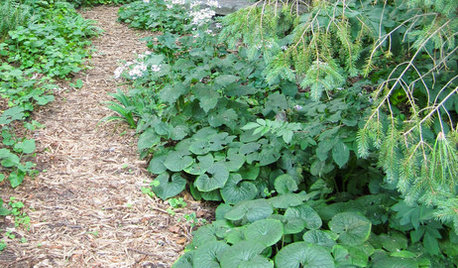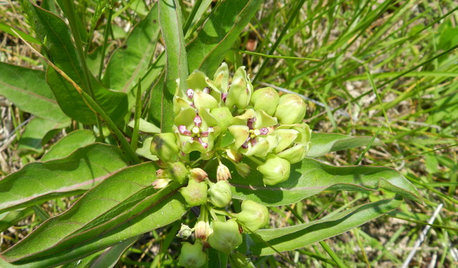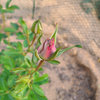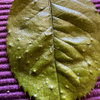Green Gooey Caterpillars!
xica_da_silva
12 years ago
Related Stories

GREEN BUILDINGGreen Grows Up: The Many Faces of Today's LEED Homes
While LEED-certified homes have some common characteristics, the rest is up to your imagination
Full Story
GARDENING GUIDESThe Art of Green Mulch
You can design a natural garden that doesn’t rely on covering your soil with wood and bark mulch
Full Story
GROUND COVERSAsarum Canadense Adds Masses of Green to Woodland Gardens
Plant Canadian wild ginger in the eastern U.S. for a shade-loving native ground cover with spring flowers
Full Story
MY HOUZZMy Houzz: Goal of a Net-Zero Nest in Southern California
A Long Beach family focuses on energy efficiency in remodeling their 1957 ranch house
Full Story
HOLIDAYSGet in the Mardi Gras Spirit With This New Orleans Neighborhood Tour
Wreaths, beads, masks and swaths of green, purple and gold add a festive Carnival splash to The Big Easy
Full Story
GARDENING AND LANDSCAPINGGrow a Lush Privacy Screen
No need to wait forever for patio privacy the green way. These 10 ideas will get your screening up and running in no time
Full Story
GARDENING GUIDESGreat Design Plant: Asclepias Viridis
Green antelopehorn is a milkweed that is short, drought-tolerant, not aggressive and a monarch favorite
Full Story
FLOWERS AND PLANTSWhite Sage Shimmers in the Water-Wise Garden
California native Salvia Apiana features silvery-green foliage and seasonal flowers that bees, hummingbirds and butterflies love
Full Story
GREEN BUILDINGWhat's LEED All About, Anyway?
If you're looking for a sustainable, energy-efficient home, look into LEED certification. Learn about the program and its rating system here
Full Story
LANDSCAPE DESIGNLiving on the Edge of the Wild
When Mother Nature is your neighbor, the possibilities — and responsibilities — can be that much greater
Full Story







Haname
Haname
Related Professionals
Hartford Landscape Contractors · Wakefield Landscape Contractors · Brookline Landscape Contractors · Dunwoody Landscape Contractors · Hayward Landscape Contractors · Lake Worth Landscape Contractors · Mesa Landscape Contractors · Mission Viejo Landscape Contractors · National City Landscape Contractors · Oxnard Landscape Contractors · Ronkonkoma Landscape Contractors · Birmingham Carpenters · Brookfield Carpenters · Miami Springs Carpenters · Coto De Caza Carpentersmangledmind
xica_da_silvaOriginal Author